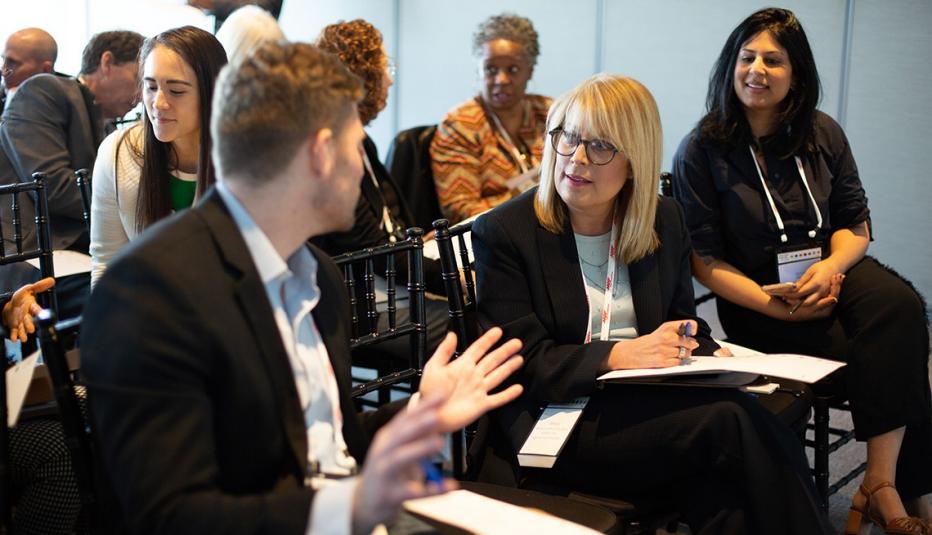AARP Hearing Center
More than 64 million Americans depend on Medicare for access to the health care services they need, yet many still struggle to pay medical bills. In 2018, according to one study, people with traditional Medicare spent an average of $6,168 for health care—nearly half of which (47 percent) went toward premiums alone—and 1 in 10 beneficiaries spent at least 52 percent of their income on health care. Research has long shown that such costs lead enrollees to delay or skip needed care.
A crucial yet often overlooked government resource—the Medicare Savings Programs (MSPs)—could help ease this burden. Under MSPs, state Medicaid agencies pay Medicare premiums, deductibles, copayments, and other out-of-pocket costs for older adults with limited incomes and resources. Like Medicaid, MSPs are implemented by each state. They also vary significantly by state.
The Centers for Medicare & Medicaid Services (CMS) is currently considering a series of new regulations that would push states to update and streamline how they determine who is eligible for MSPs, limit how much paperwork applicants must provide, and make other changes to increase enrollment.
Eligible but Not Enrolled
Today, about 16 percent of all Medicare beneficiaries (about 10.2 million) are enrolled in MSPs, but the number of individuals eligible for these programs is significantly higher. The average MSP enrollee can save at least $165 each month, or $1,979 annually, on Medicare Part B (medical insurance) premiums in 2023. But because MSPs also cover copays, deductibles, and coinsurance for the lowest-income enrollees, those savings could be substantially higher, depending on how often a person uses medical services and which MSP they are enrolled in. Importantly, studies show that MSPs disproportionately help people of color, women, and individuals under age 65 with disabilities.
To understand drivers of MSP underenrollment and identify strategies to overcome them, the AARP Public Policy Institute (PPI) reviewed more than a dozen studies, analyzed CMS and Social Security Administration (SSA) data, and interviewed stakeholders working on the front lines to enroll more Americans in MSPs. This paper explores the findings and discusses their implications regarding solutions.
State-Level Barriers and Areas For Improvement
Studies have found that a lack of awareness of the program is often a contributing factor to underenrollment in MSPs. Potential beneficiaries also face onerous eligibility and enrollment processes and cite concerns about jeopardizing other benefits. Some groups, such as people living in rural areas, may also be harder to connect with via outreach efforts and are less likely to encounter other government assistance programs where they might learn about MSPs.
The federal government has consistently noted over the years that many states could be doing more to increase enrollment in MSPs. States already have the option to expand eligibility by raising income and asset limits. As of 2022, at least five states and the District of Columbia have set income limits higher than the federal minimums, 10 states and the District have adopted no asset limit, and four states have increased asset limits. However, most states still use the federal minimum standards.
Many states also have cumbersome application processes that could be streamlined—a barrier confirmed by qualitative evidence from those on the front lines of enrollment. For example, eligibility for MSPs overlaps substantially with another federal resource aimed at helping low-income Americans pay their medical costs: the Medicare Part D (i.e., prescription drug coverage) Low-Income Subsidy (LIS) program, also known as “Extra Help.” Medicaid agencies are required by federal statute to use LIS eligibility data to proactively initiate MSP applications. However, CMS has reported that some states are not meeting those requirements—and instead are putting the onus back on individuals by sending them a blank MSP application or a letter instructing them to apply.
States and The Proposed CMS Rule
States can take this opportunity to initiate a broader review of options to increase MSP enrollment and reduce administrative burden on both program staff and potential enrollees. One area that could benefit from further study is the effect on enrollment of expanding income limits and/or eliminating asset tests.
- For example, Maine broadened its MSP eligibility first by disregarding assets starting in January 2007 and then raising income eligibility limits three months later. Enrollment jumped from nearly 9,000 in January 2006 to more than 30,000 in July 2007. The biggest increase came after new income limits were implemented; roughly 13,500 beneficiaries gained MSP coverage in April 2007 alone.
- Massachusetts included $73.2 million in its 2023 budget to expand MSPs to cover individuals with incomes up to 225 percent of the federal poverty limit (FPL), which the state estimates will enable approximately 65,000 additional Massachusetts residents to now qualify.
- Washington State introduced a bill this year to eliminate its asset test for MSPs as there is some evidence that eliminating asset tests not only boosts enrollment but can save states administrative costs.
- And in New York, up to 300,000 older adults could gain MSP coverage beginning in 2023 under a new expansion resulting from the state raising the income limit to qualify.
There are likely several reasons states have not made greater inroads in improving MSP enrollment rates. For instance, past efforts have shown that education and outreach to eligible individuals are not quick or easy. Some states may also need to make changes to eligibility systems that require staff time, technology upgrades, or other resources.
Action Steps
In its effort to help solve the enrollment challenge, the federal government can go beyond policy—it could help to maximize impact of the new rule by bringing states together to share best practices. It could also support efforts to offer technical assistance and disseminate such best practices—for example, by creating a checklist of potential data sources and program eligibility alignments.
For their part, states should, at a minimum, work to increase enrollment rates for those already eligible for MSPs by employing some or all of the following tactics.
Make applications simpler by using existing data
- Align with LIS. States should align the methods they use for counting income and assets for MSPs with those for LIS, likely reducing administrative burden in the process.
- Accept LIS application data received from SSA as fully verified.
- Draw from other program data in the verification process.
- Train (and retrain) caseworkers to identify those likely eligible for an MSP.
Increase and improve outreach efforts
- Work with stakeholders, including potential enrollees themselves, to develop strategies to best connect targeted enrollment outreach activities with those individuals likely to be eligible for MSP enrollment.
- Use community leaders as trusted sources of information in spreading word of MSPs.
- Take advantage of federal funding.
Expand eligibility
Options for expanding eligibility include:
- Increase income limits for individuals to quality for MSP and/or increase income disregards.
- Change or eliminate the asset test.
CMS’s proposed rule and, more broadly, growing interest in using MSPs to their maximum potential present an opportunity to make health care more attainable and affordable for many Americans. The proposed federal rule encourages states to fully leverage data and electronic verifications, where possible. That undertaking could be significant for states, but it also has the potential to yield large dividends in expanding enrollment. Combined, these efforts at the federal, state, and local levels could help hundreds of thousands of Americans access the vital medical care they need to stay healthy and continue to live independently as they age.





































































